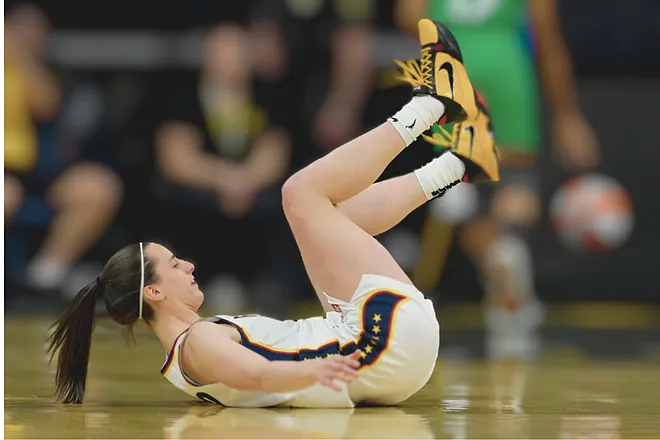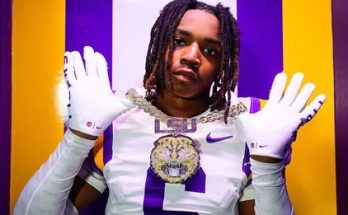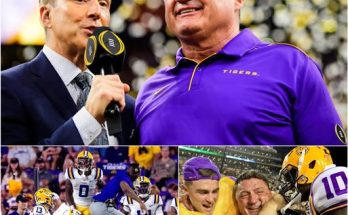The WNBA has found itself at the center of a growing firestorm after fans and analysts erupted in outrage over the league’s decision to snub rookie sensation Caitlin Clark in favor of a rival star for a major honor. The decision has reignited heated debates around fairness, league marketing, player treatment, and the pressures placed on young athletes who bring massive public interest into professional sports.
Caitlin Clark, the No. 1 overall pick in the 2024 WNBA Draft and arguably the most talked-about figure in women’s basketball, was expected by many to earn a top spot in the league’s All-Star lineup or be given marquee recognition for her historic rookie campaign. Yet, in a move that left fans and media outlets stunned, Clark was left off the roster in favor of a more seasoned player, a rival guard whose statistics and impact this season have been widely debated.
The backlash was immediate. Social media erupted as hashtags like #ClarkSnub and #WNBAControversy trended within minutes. Thousands of fans, many of whom credit Clark for singlehandedly boosting national interest and TV ratings in the WNBA, voiced their frustration. Critics questioned whether the league was trying to send a message, perhaps prioritizing veteran loyalty or pushing back against the growing attention being lavished on one player.
Clark’s popularity has been nothing short of transformative. From sellout crowds to record-breaking viewership, her transition from NCAA superstar at Iowa to professional player with the Indiana Fever has brought unprecedented visibility to the league. Yet, with that spotlight has come a curious resistance—some subtle, some overt—suggesting that not everyone in the WNBA is eager to embrace Clark’s soaring popularity.
Many fans and sports analysts believe that the snub wasn’t just a basketball decision—it was political. Some argue that the league is uncomfortable with the disproportionate attention Clark receives and may be intentionally downplaying her influence to balance narratives and uphold a sense of parity among the league’s stars. Others view it as a move to reward veterans who’ve “paid their dues” in a league that has long struggled for media relevance, equity, and consistent viewership.
The player selected in Clark’s place is no slouch—she is a talented and respected guard who has led her team admirably and logged impressive performances. But by almost every metric, from points per game and assists to overall media impact and fan engagement, Clark outpaces her. In addition, Clark has shown significant growth in her short time in the league, frequently drawing double teams and shouldering immense pressure while still producing headline-worthy performances.
What makes the controversy even more glaring is the recent surge in WNBA popularity, much of it driven by Clark’s entrance into the league. Networks have repeatedly reported record-breaking viewership numbers when Clark is on the court. Merchandise sales have skyrocketed. Road games for the Indiana Fever have become near-certain sellouts. By any marketing or business measure, Clark is the face of the WNBA’s modern resurgence.
To ignore that influence—or worse, to seemingly punish it—has struck a nerve.
Former players have also weighed in. Several WNBA legends expressed their disappointment, with one saying bluntly, “The league can’t afford to alienate its biggest star, especially not right now.” Another noted that while veterans deserve respect, the league should embrace the attention Clark is bringing rather than try to “level” her impact.
Some insiders have pointed to locker room tensions and whispered rumors about jealousy, resentment, or friction between Clark and other players. Her arrival has undeniably shifted the league’s power dynamics, both in terms of attention and financial influence. But critics argue that instead of managing that shift gracefully, the league and some of its stars appear to be resisting it, fostering a narrative of division rather than unity.
Clark herself has handled the situation with characteristic class. When asked about the snub, she responded with humility, saying, “There are so many amazing players in this league. I just focus on getting better every day and helping my team.” Still, fans noted a tinge of disappointment in her tone—a sentiment echoed by Indiana Fever head coach Christie Sides, who voiced strong support for Clark and said she was “beyond deserving” of recognition.
This isn’t the first time controversy has surrounded Clark’s treatment in the WNBA. She’s been the subject of hard fouls, aggressive play, and what many consider inconsistent officiating. She’s also been caught in the middle of growing tensions about race, marketability, and generational differences between WNBA stars. As a young white player with massive corporate backing and mainstream popularity, Clark’s rise has unintentionally exposed long-simmering fault lines in the league’s culture.
The WNBA, for its part, released a brief statement defending the selection process, claiming it was “based on performance, team contributions, and votes from coaches, players, and fans.” But the vague wording did little to calm the storm. Fan polls had overwhelmingly favored Clark’s inclusion. Media pundits questioned the process, suggesting that it lacked transparency and possibly catered to behind-the-scenes lobbying or unwritten agendas.
Amidst the furor, one thing is clear: the WNBA is at a crossroads. The league is experiencing unprecedented visibility, with a golden opportunity to capitalize on national interest and a new generation of fans. Caitlin Clark is undeniably at the center of that wave. How the league chooses to embrace—or suppress—that momentum will shape not just the next season, but the league’s trajectory for years to come.
Sponsors are watching. TV networks are watching. Young athletes and fans are watching. This controversy has cast a spotlight not just on a questionable All-Star omission, but on the broader cultural and business decisions being made behind closed doors. Does the league want to evolve into a commercially competitive force that leans into its most marketable assets? Or will it cling to old norms that prioritize internal politics and gatekeeping over progress?
As the noise continues, many fans are already calling for reform. Suggestions range from making the selection process entirely public, to involving more fan input, to adjusting criteria to better reflect impact beyond raw stats. Others believe the incident should trigger a deeper discussion around how the WNBA defines leadership, success, and star power in the modern era.
In the meantime, Caitlin Clark continues to show up, compete, and lead the Fever with poise under pressure. She remains one of the top draws in all of women’s sports and shows no signs of slowing down. But for a league desperately trying to grow, alienating its brightest young star might prove to be a costly misstep.
If the WNBA truly wants to build a future rooted in visibility, growth, and broad appeal, it must ask itself whether sidelining the very figure driving that growth is worth the backlash. As it stands, the message to fans seems confusing: “We want your attention, but not the player you came to see.”
That contradiction is now front and center, and how the league responds in the coming weeks may determine whether this was just a temporary controversy—or the beginning of a lasting divide.



